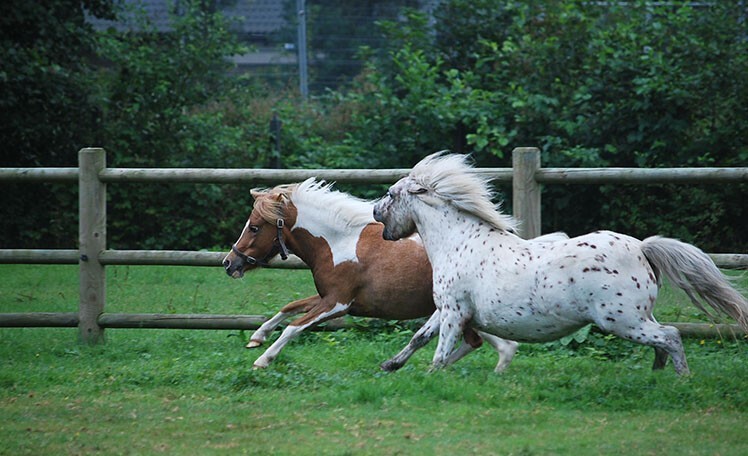
Falabellas and other horses primarily use body language to communicate, but neighing also plays an important role. People who spend a lot of time with Falabellas will undoubtedly have noticed the different ways they neigh.
Communication tools
You've probably heard the neighing of a Falabella horse. Many people recognize the sound when a Falabella is left in the pasture while the rest of the herd is being removed. Even when a mare is separated from her foal, they will neigh to each other to establish contact. However, neighing isn't the only means of communication Falabellas use. A Falabella's body language reveals a lot about its feelings. Body language is measured by facial expressions:
– Eyes
– Ears
- Nose
- Mouth
In addition, the rest of the body is also used:
- Tail
– Stomping with the hooves
– The way they stand
How does a whinny work?
A Falabella horse neighs when it inhales and exhales deeply. As it exhales, air flows past the larynx, causing the vocal cords to vibrate and produce sound. The throat and mouth are usually open. The amount of air and how it is expelled determine the pitch and power of the neigh. The cavities in the head and chest act as sound chambers, amplifying the sound.
Sounds of a Falabella horse
There are several sounds a Falabella horse can make. Here are the most common ones:
Neigh (Whinny) The neigh is the most familiar sound a Falabella can make. It resembles a scream and usually serves as a warning signal. A neigh is often sharp and can be heard up to a kilometer away. It is often used to contact another horse that has disappeared from view or as a warning that the Falabella might kick. You can sometimes tell from a Falabella's body language that it is about to neigh; it will start by shaking its head and poking its muzzle forward.
Chuckle (nicker): The nicker is a soft sound like a short chuckle, usually lasting 0.2 to 1.7 seconds. It is often used as a greeting or to announce a presence. The sound is produced through the nostrils while the mouth remains closed. Falabellas often make this sound when being fed or when a worried mare calls her foal.
Squeal. This sound is often made during aggressive or sexual encounters and can last from 0.1 to 1.7 seconds. It can be heard over a hundred meters away. In an aggressive encounter, it is a defensive signal, especially in stallions. Mares make this sound when they are in heat and are approached by a stallion.
Snort (snort) Falabella horses often snort when excited or after strenuous exercise. Snort serves two purposes: clearing the airways and warning the herd of potential danger. The sound lasts about 0.8 or 0.9 seconds and can be heard from 40 meters away.
Sighing (sigh) Falabellas sigh regularly, which often indicates relaxation. This sound is made by inhaling deeply and then exhaling calmly and audibly. Sighing can occur during grooming or lunging, but also when the horse is bored.
What can you learn from this?
Recognizing all of these sounds and their meaning can give you more insight into the mood of your Falabella horse, allowing you to better respond to their needs and behavior.
Welcome on the Facebookpage of Falabella Friends and MijnFalabella.nl | You can like this page if yo